About Tuscany
About Tuscany
A Rich Cultural Heritage
Halfway up Italy on the left-hand side, the region of Tuscany embodies much of what we think of as classic Italy: bustling cities with outstanding art and monuments; historic walled towns with narrow winding streets; rolling countryside of vineyards, olive groves and dark slender cypress trees; tiny, sleepy villages perched on top of symmetrical hills and sandy tracks leading to pastel painted villas with terracotta tiled roofs, many of which are holiday homes.
Tuscany attracts hordes of tourists, in fact the whole region has been dubbed 'Chiantishire' in honour of its annual British invasion, but there are still relatively unknown mountains, islands and beaches just waiting to be explored.
Florence is Tuscany's unmissable crown jewel, with its beautiful buildings, colourful history, priceless art and unique atmosphere. But Tuscany is one of the few Italian regions well-known to foreigners as a tourist destination in itself. For decades a Tuscan villa has been the dream holiday for many travellers. And amongst the vineyards and hills of Tuscany are other lovely historic towns - not as packed with attractions as Florence, but not as packed with tourists either.
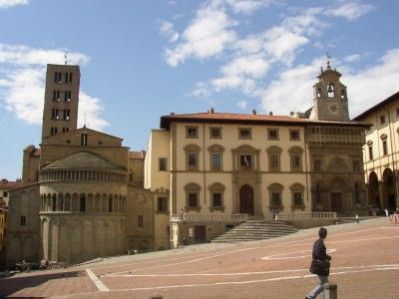
Siena is a patrician hilltop town with a past to rival that of Florence, famous for the rivalry between its districts (called contrade) which climaxes in the Palio.
Pisa boasts not just the legendary leaning tower, but also several other attractions, and good transport links to other parts of Italy. Smaller Tuscan destinations which are popular with holidaymakers include Lucca, San Gimignano (a forest of medieval towers on a hill) and the wine-producing Chianti area.
The coastline is mostly visited by holidaying Italians, with Forte dei Marmi, the Monte Argentario promontory and the Isle of Elba among its most popular seaside destinations. The region's thermal springs at Chianciano and Bagni di Lucca are also popular.
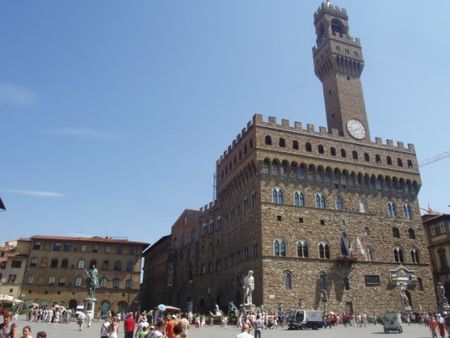
A TuscanTreasure Chest
Tuscany is home to many natural and cultural treasures which have secured its place in the heart of the discerning tourist.
Rolling hills, sweet rolling wooded hills and valleys, sunflower fields, rustic farmhouses. And cypress trees.
Thus the Tuscan landscape has conquered the world. And yet, the nature of Tuscany is more than this.
The surprise of snow-covered peaks, ponds and lagoons, Mediterranean underbrush that grows right out to the sea, woods and a countryside still marked by ancient farming practices.
Resolutely protected parks and reserves that are not oases in the desert but links in a network that covers all the environmental systems of the region: Apennines, rivers valleys, wetlands and coast.
The system of protected natural areas of Tuscany includes national parks, state and sea reserves, wetlands of international importance, regional parks, provincial parks, provincial reserves, protected natural areas of local interest.
Then there is varied Tuscan coastline with its long beaches stretching for miles.
A famous coastline, framed by the superb arch of the Apuan Alps, the legendary mountains of white marble is worthy of the cover of travel brochures.
And not far from the world famous Leaning Tower, long sweeps of sand open up, but that is not all.
There is the sea, sand, pine woods and the Natural Park of San Rossore.


The winning ingredient in this recipe is nature, but your holidays will be what triumphs.
Maybe your imagination will be sparked up by the bays on the Etruscan coast. Maybe it will be the untamed vegetation and the blue waters of the Tuscan islands with the cliffs plunging into the sea.
The colours of the sunset will take you out of this world, far away from the drab and monotonous
everyday life. You still have the chance.
Argentario, where the intense green of the unspoilt Maremma countryside fades into the crystal blue waters of the sea. Dive into the archaeological sites of Etruscan memories. Or do you prefer to find your berth in the exclusive fashionable ports?
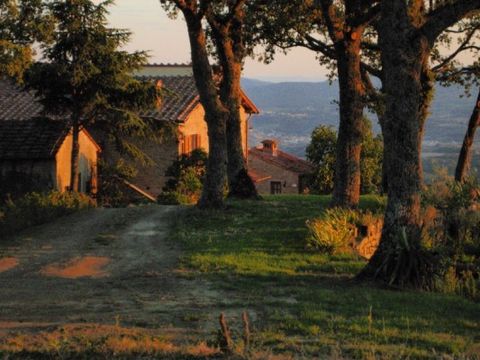
Sites & Sounds of Tuscany
Few places in the world can boast an artistic legacy so deeply rooted in the territory and popular culture as Tuscany.
It is a land of art and civilisation which today continues to be a sought-after place of residence and source of inspiration for numerous Italian and foreign artists. The countless testimonies of art in Tuscany indeed narrate a story as articulated and complex as it is unique and unrepeatable, starting at the dawn of civilisation and continuing up until present day.
For the visitor, a trip to Tuscany today holds much the same fascination that accompanied the travellers on the Grand Tour. The first-time visitor to the lands of Tuscany cannot but be amazed by the heady mix of landscape and culture, history and the expressive means of architecture and town-planning, its art, architecture, monuments and museums.
A cradle of Italian civilisation and one of the greatest crucibles of modern European culture, Tuscany is a workshop of artistic experiences.
The story of art in this region begins with the cave dwellings of Cetona, the stele-statues of Lunigiana, the presence of ancient civilisations on Elba Island, and then continues with the Etruscan necropolises with tangible signs of a Roman past, the countless testimonies of the Middle Ages, the flowering of the Gothic, the explosion of the Renaissance, the opulence of the Baroque, the Macchiaioli, the flowery art nouveau style, finally reaching the expressions and trends of contemporary art.
This is a region that is drenched in culture, so expect an array of festivals, especially in the summer months that range from simple flag waving village affairs to the world famous horse racing Palio in Siena and the Viareggio carnival.
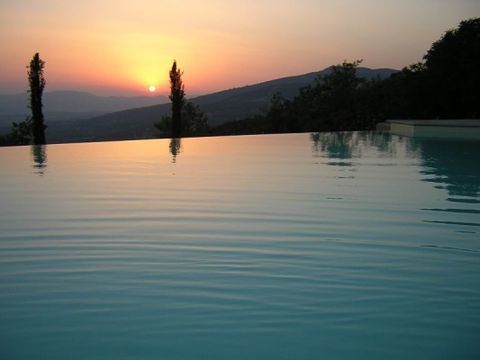
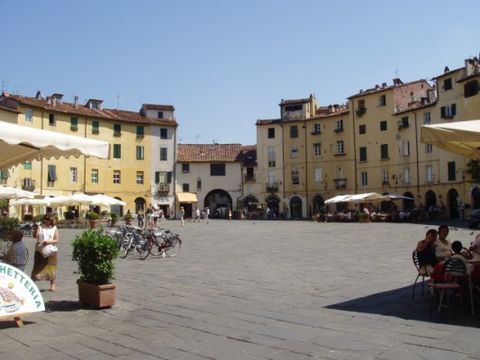
Shopping is a favourite pastime in Italy and Tuscany offers great style and quality, especially in fashion, leather and also home design and furniture as well as antiques. For clothes shopping, Florence is second to none with fantastic boutiques and out-of-town designer outlets. Siena is also becoming a shoppers paradise but on a smaller and more gentile scale. Arezzo houses the largest outdoor antiques fair in its square and you can also find outdoor antique fairs in Lucca and other towns.
For those looking for nightlife, head for the larger towns, where there is an abundance of bars and restaurants. For a more hectic night, then Florence and the buzzing coastline around Viareggio offer some great bars and clubs.
Italy is not known for its golf but for golf lovers, Tuscany really does steal the march with courses around Florence, Montecatini Terme, Punta Ala, Tirrenia and Orbetello amongst others. Other activities of interest include sailing and diving (especially along the more southern coastline around Argentario), horse riding and fishing.
An unmistakable ingredient in Tuscan life is its cuisine. Although Tuscany may not be regarded as one of the great culinary regions, it does offer good traditional food using fresh ingredients and is full of flavour. The region also produces some of the most famous wines in Italy, with Chianti being the most famous and Brunello di Montalcino being considered to be the best.

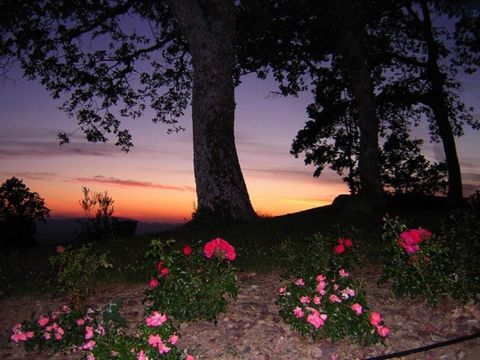
Local Festivals
Festivals are part and parcel of the Tuscany fabric. Every town worth its salt throws a party of some description each year, from wine, beer, pizza or traditional food festas and sagras, to pagan festivals and carnivals. The majority take place during the summer.
Many religious feast days are also celebrated throughout the year and most towns have a patron saint whom they honour annually in suitable fashion. Normally local towns co-ordinate these public events, so you can go to all of them if you want !
All festivals are family friendly affairs, where even the smallest of children can be seen running around into the small hours.
There are many events all year round throughout Tuscany, but many are concentrated during the summer. Many sagre, food festivals, start in early summer and continue on through the fall as local specialties (truffles, wine, olive oil) come into season. If you are coming to Tuscany during other periods of the year, don't worry as there is always something to see or do then as well. For specific events, it is best to contact the local tourism office of the locality you will be visiting.
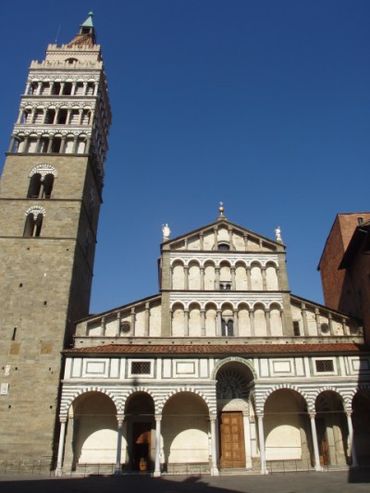
Spring
Easter, Scoppio del Carro
- Florence
The big event in Florence for Easter is the Scoppio del Carro, or the "explosion of the cart", an event which dates back 300 years. Today, an elaborate wagon built in 1622 and standing two to three stories high is dragged through Florence behind a fleet of white oxen decorated in garlands to the square between the Baptistry and Cathedral. The cart has been properly rigged with a suitable arsenal of fireworks so that when a dove-shaped rocket (symbolising the Holy Spirit) slides down a steel cable at full speed from the Cathedral altar, it will set off a ferocious dance of fire on impact. A big bang ensures a good harvest, and a parade in medieval costume follows. The Explosion of the Cart takes place around 11 a.m. so watch out for the cart on the streets of Florence an hour beforehand.
Maggio Musicale Fiorentino
- Florence
From late April to June, the Florence Maggio Musicale, May Music Festival, is a series of internationally acclaimed classical music concerts and recitals, opera and ballet in venues across the city. Tickets can be hard to come by, so check the online schedule and purchase tickets in advance.
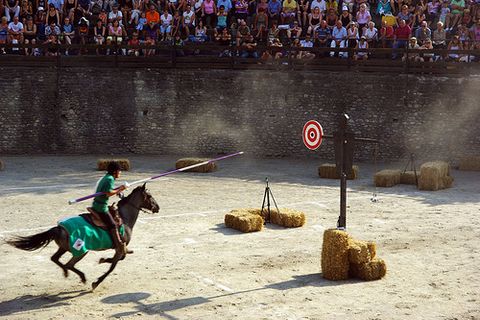
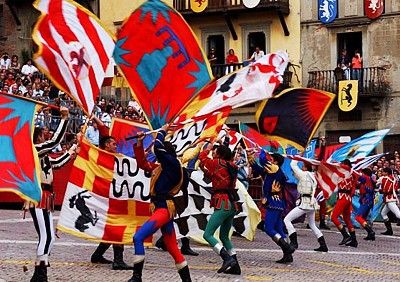
Summer
Luminara, Regatta and Battle of the Bridge
- Pisa
On the night of June 16, the Luminara begins the festivities to honor Saint Ranieri, the patron saint of Pisa, the following day. Over 70,000 candles light up the palaces along the Arno river, with a fireworks display afterwards.
To celebrate the patron saint of Pisa, four boats representing the most ancient districts of the city compete in the Regatta of Saint Ranieri along the Arno river, heritage of the past glory of Pisa as an ancient maritime republic.
Generally a week later, Pisa reenacts the Battle of the Bridge, a medieval "push of war" contest which takes place on the central bridge in Pisa. The contest is preceded by a huge procession in costume through the city.
Calcio Storico Fiorentino
- Florence
Fabulous fireworks along the Arno conclude Florence's celebrations to St. John the Baptist, the city's patron saint, on June 24. First, there is a parade in historical costume that starts at the Church of Santa Maria Novella and ends at the Church of Santa Croce, where the Calcio Storico is then played in the dirt-covered square in front of the church. The game is a combination of soccer, rugby, and big time wrestling, all played while wearing 16th century costumes. The four teams represent the four traditional neighborhoods of the city: Santa Croce (blue), Santo Spirito (white), Santa Maria Novella (red), and San Giovanni (green). The prize is a whole Chianina calf.
Giostra del Saracino
- Arezzo
Arezzo's Piazza Grande is the setting of the Giostra del Saracino, or Saracen Tournament. Held twice a year, a night version on the third Saturday in June and the second on the first Sunday in September, this tournament has its origins in the early 16th century and in its present form, commemorates Christian efforts to hold back the tide of Islam in the 14th century. There is a lively and colorful procession preceding the event in which eight costumed knights charge towards a wooden representation of the Saracen, aiming to hit the Saracen's shield with lances. The target is mounted as to swivel around and can actually hit back! Each pair of knights represents one of Arezzo's four rival districts and their supporters each occupy a side of the piazza. The winner receives a golden lance.
Palio di Siena
- Siena
The Palio horse race is a colorful, bareback horse race round the dirt-packed Piazza del Campo, Siena's main square, that takes place every July 2 and August 16. The contrade (traditional neighborhoods) compete for the palio, or banner, dedicated to the Virgin Mary. The square is filled with costumed pageantry before the race, and massive feasts are set up on long outdoor tables that can stretch for blocks on the medieval side streets.
Pistoia Blues Festival, Giostra dell'Orso
- Pistoia
Two important events take place in Pistoia every July: the Pistoia Blues Festival and the Giostra dell'Orso. Taking place in the first half of July, the Pistoa Blues draws international blues artists who perform in the city's main square.
After a magnificent procession held on the 25th of July to honor St. James, the patron saint of the city, twelve knights take part in the Giostra dell'Orso, a medieval jousting tournament. The knights' goal is to hit two stylized bears with their lances to the sound of drum rolls and fanfares. The bear (orso) is the heraldic animal of Pistoia and the Giostra is the highlight of the towns's "Luglio Pistoiese" festival.
Bravio delle Botti
- Montepulciano
The Bravio delle Botti, which takes place on the last Sunday in August, is a barrel rolling race between the eight Contradas (divisions) of Montepulciano competing for a Palio, a painted cloth banner. The barrels (which weigh 80 kilos) have to be rolled up about 1800 meters along the main street of the town of Montepulciano to end in the Piazza Grande. Costume processions precede the competition and a street banquet follows.
Autumn
Giostra del Saracino
- Arezzo
Good old-fashioned medieval jousting in Arezzo on the first Sunday in September. This is the second tournament of the year, the first one already held in June. See above for more details.
Palio della Balestra
- Sansepolcro
On the last Sunday in May, the crossbowmen of Sansepolcro travel to Gubbio (Umbria) for the Palio della Balestra, a crossbow contest between the men of of Gubbio and Sansepolcro who dress in medieval costume and use antique weapons. On the second Sunday in September, the crossbowmen of Gubbio visit Sansepolcro for a rematch.
Display of the Virgin's Girdle
- Prato
Prato keeps the Virgin Mary's girdle under heavy lock and key year-round in the Duomo, but takes it out five times a year amid much religious pomp and some medieval drum rolling to show it to the crowds massed on the piazza. Two of these occassions include September 8 (celebration of the nativity of the Virgin Mary) and December 25 and 26. The rest of the time, Prato's most revered relic is housed in the beautiful "Pulpit of the Sacred Girdle" off the facade's right corner. The story of how the girdle arrived in Prato is detailed in the chapel immediately to the left of the entrance in Agnolo Gaddi's fresco cycle of "The Legend of the Holy Girdle (1392-95)".
Winter
Epiphany Celebrations
- across all of Tuscany
Roman Catholic Epiphany celebrations are held throughout Italy on January 6. Most of the cities in Tuscany will have celebrations in the main squares.
Carnavale
- Viareggio
During the period before Ash Wednesday, many towns stage carnivals and enjoy their last opportunity to indulge before Lent. The popular carnival celebrations held at Viareggio are among the best known in all of Italy, with masked pageants, fireworks, a flower show and parades along the Tuscan Riviera. Carnevale in San Gimignano and Florence are much smaller, with locals dressed up in colorful costumes marching through the streets. The biggest celebration is, of course, held in Venice.
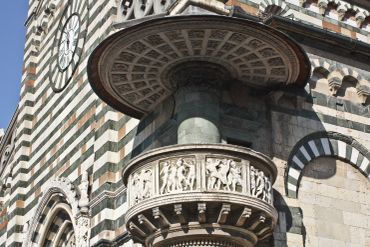
Simply Delicious
Italy's Tuscany region offers the visitor such a feast of culinary delights it really is difficult to know where to start. Food and wine is almost a religion in Tuscany, as well as the rest of Italy. And to enjoy the vast range of traditional flavours on offer you are advised to take your time and do the job thoroughly.
Eating out means encountering a wonderful variety of Italian dishes, usually divided into three courses (antipasti, primo piatto and secondo piatto) followed by dessert, coffee and the choice of a mind-boggling array of “digestive” (and usually very potent) liqueurs. If done properly the whole thing can easily last two or three hours!
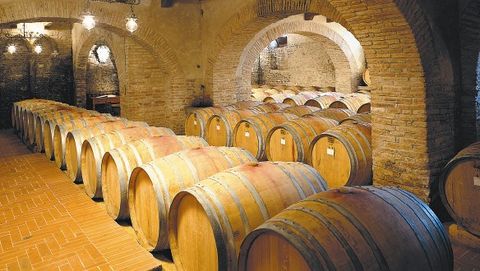
You will probably notice different names for restaurants apart from ristorante, such as osteria, trattoria, agriturismo and pizzeria, but rest assured that all serve up a range of great Italian flavours to savour. Pizzerias generally open only in the evening because they use large wood ovens, but pizza can be bought by the slice from take-aways at lunchtime as well.
Seafood is excellent along the coast, while in the upland areas traditional cooking of local organic produce is very much to the fore.
Highly prized white and black truffles are found in several areas of Tuscany and form an important part of many Italian dishes, while stuffed olives (olive all’ascolana) originate from the Ascoli Piceno area.
Wine is highly prized in Tuscany and well known local labels include the red wines of Brunello di Montalcino.
Click here
for traditional Tuscany recipes
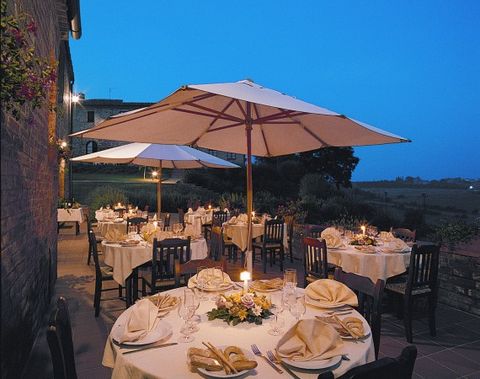
Share
Tweet
Share
Mail


